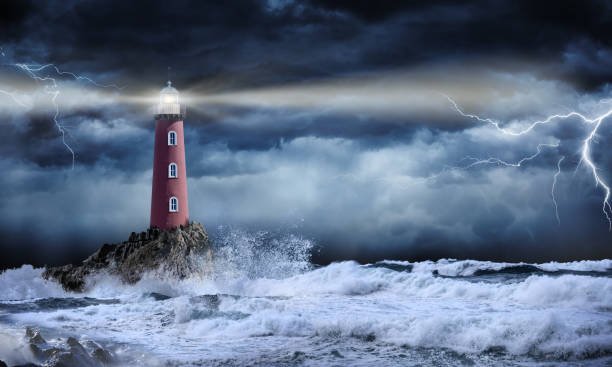A light house
A lighthouse is a tall tower or building equipped with a powerful light, designed to guide ships safely at sea and prevent accidents. Lighthouses are usually located on coastlines, islands, or dangerous rocky areas to warn sailors of hazards and help them navigate.
History of Lighthouses
Lighthouses have been used for thousands of years. One of the earliest and most famous was the Lighthouse of Alexandria, built in ancient Egypt around 280 BCE. Over time, lighthouses evolved from simple fires on hills to advanced structures with rotating lights and modern technology.
How Lighthouses Work
Lighthouses use a powerful lamp and lens to project light over long distances. The Fresnel lens, invented in the 19th century, made lighthouses more effective by concentrating light into a strong beam. Today, many lighthouses use electric lights, solar power, and automated systems, replacing traditional oil lamps and keepers.
Importance of Lighthouses
- Navigation Aid – Helps ships find their way safely.
- Warning System – Alerts sailors to dangerous rocks and shallow waters.
- Landmark – Acts as a point of reference for travelers.
- Historical and Tourist Attractions – Many old lighthouses are preserved as museums.
Modern Lighthouses
With advancements in GPS and satellite navigation, lighthouses are used less today, but they still serve as backup systems in case of technological failures. Some have been turned into automated stations, while others are kept for historical value and tourism.
Lighthouses remain a symbol of hope and guidance, representing safety for those at sea.
